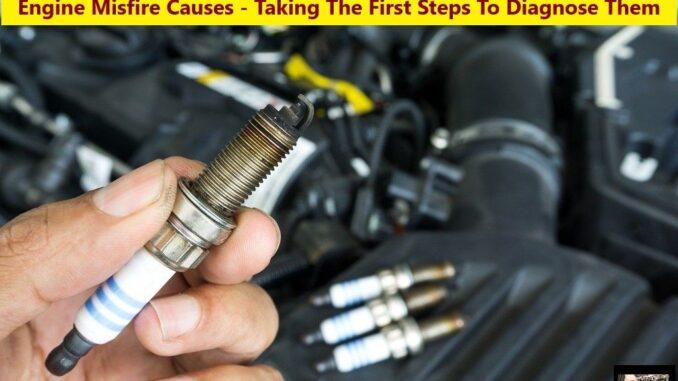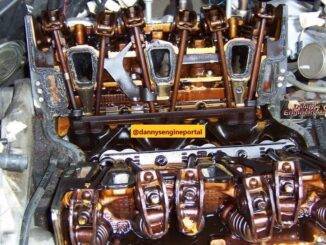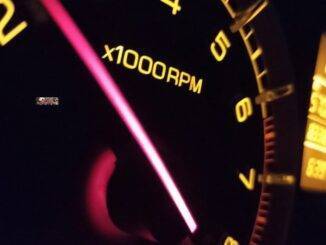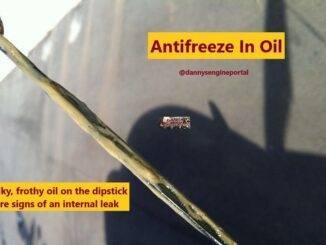
Trying to find engine misfire causes, can be a little tricky and seem overwhelming to the average person.
However, while driving, paying close attention to how your engine is running, can help you narrow down, engine misfire causes.
When a misfire occurs, take note of the circumstances when it’s happening. Such as, whether the engine is cold or has warmed up. The speed at which it occurs, (low speed or high speed) and the frequency it occurs. Finally, if it occurs only when, accelerating or at a steady speed.
So, let’s look at what to do, when trying to diagnose, engine misfire causes. First, keep a log of the problems. Because, this information will help you, locate the source of the problem.
Spark Plugs
The first thing to remember is that, The Spark Plug Is A Window Into Your Engine. So, paying close attention to their condition, may help narrow down your diagnostic search.
So, you can find many engine misfire causes, just from examining your spark plugs. Consequently, a visual inspection of the spark plugs, will display symptoms and conditions of engine misfire causes.
Basically, There Are Three Main Things That Can Contribute To Engine Misfire Causes:
- Loss of spark
- Air to fuel ratio is too far out of balance to ignite
- Loss of compression
But, There Are Other More Dire, Mechanical Engine Misfire Causes:
- Computer or wiring problems
- Breakage in the rotating mass (pistons, rods, crank bearings)
- Valves leaking
- Cracked or warped cylinder head
- Engine overheating
- Blown head gaskets
So, if you have an engine misfire and have isolated it down to one cylinder. Then, the cause may be obvious when you remove the spark plug.
Ignition Related
An ignition system problem, is one of the most common reasons, for engine misfire causes. So, spark plugs, ignition cables, distributor cap and rotor, and ignition coils, all wear over time. Hence, their ability to transfer the needed spark to ignite the air to fuel mixture, becomes compromised.
In the early stages, the spark will only be weaker and the actual misfire, will be subtle. And, you may also find, a cracked or broken spark plug.
If the plug appears to be OK, but is wet, inspect the plug wire and boots for damage. Measure the plug wire’s resistance, end to end, with an ohmmeter. As a rule, resistance should not exceed 8,000 ohms per foot. Finally, replace the wire if resistance exceeds specs.
Compression And Oil Related Engine Misfire Causes
Oily deposits on the plug would tell you, oil is being sucked into the combustion chamber. It may be going past, worn valve guides or seals, or worn or broken piston rings. As a result, there may be carbon deposits holding valves part way open, causing compression loss. Consequently, there is no easy fix for this kind of problem, short of a valve job or overhaul.
Installing a spark plug, with a slightly hotter heat range, may help resist fouling. But, the most likely cause, is worn valve guide seals and/or guides. Consequently, worn rings and cylinders, can also allow oil to enter the combustion chamber.
Replacing the spark plug will temporarily cure your misfire problem. But, until the oil consumption problem is fixed, the engine will continue to foul spark plugs.
A leakdown or compression test will help you determine, if the oil is getting past the valve guides or rings. If the cylinder shows good compression, when a little oil is squirted into the cylinder (wet compression test). Then, it would tell you that the engine needs, new valve guide seals and/or guide work. Consequently, most late model engines have positive valve guide seals.
Coolant Leaking Related Engine Misfire Causes
So, a spark plug that shows, heavy whitish to brown deposits, may indicate a coolant leak. This type of problem will only get worse. And, can lead to even greater problems, if the leak isn’t fixed. Coolant makes a lousy lubricant and can cause piston ring, cylinder and bearing damage.
Loss of coolant, can also lead to overheating, which may result in cracking or warping of aluminum cylinder heads. So, if you suspect this kind of problem, pressure test the cooling system to check an internal coolant leak.
Spark plugs that show pre ignition or detonation damage, may indicate, a need to check timing. Also, the operation of the cooling system and conditions that cause, a lean air to fuel mixture. You might also want to switch, to a colder heat range plug.
Fuel Related Engine Misfire Causes
So, if the ignition components and compression in a misfiring cylinder are fine. Then, that leaves a fuel related problem, as the only other possibility. You can start by, checking for voltage at the injector. A good injector should also buzz, while the engine is running. No buzzing, would tell you the injector is dead. While, a no voltage reading would tell you that it isn’t the injectors fault.
But, is a wiring or computer driver problem. So, if the injector is buzzing and spraying fuel, but the cylinder isn’t getting enough fuel. Then, the injector is dirty or clogged. On-car cleaning, may help remove the varnish deposits that are restricting fuel delivery.
In Summary: Engine Misfire Causes
So, the best way to avoid engine misfire causes is, following the scheduled maintenance in your owner’s manual. Finally, keep your vehicle’s engine tuned, according to factory specs.
Thank You !!




